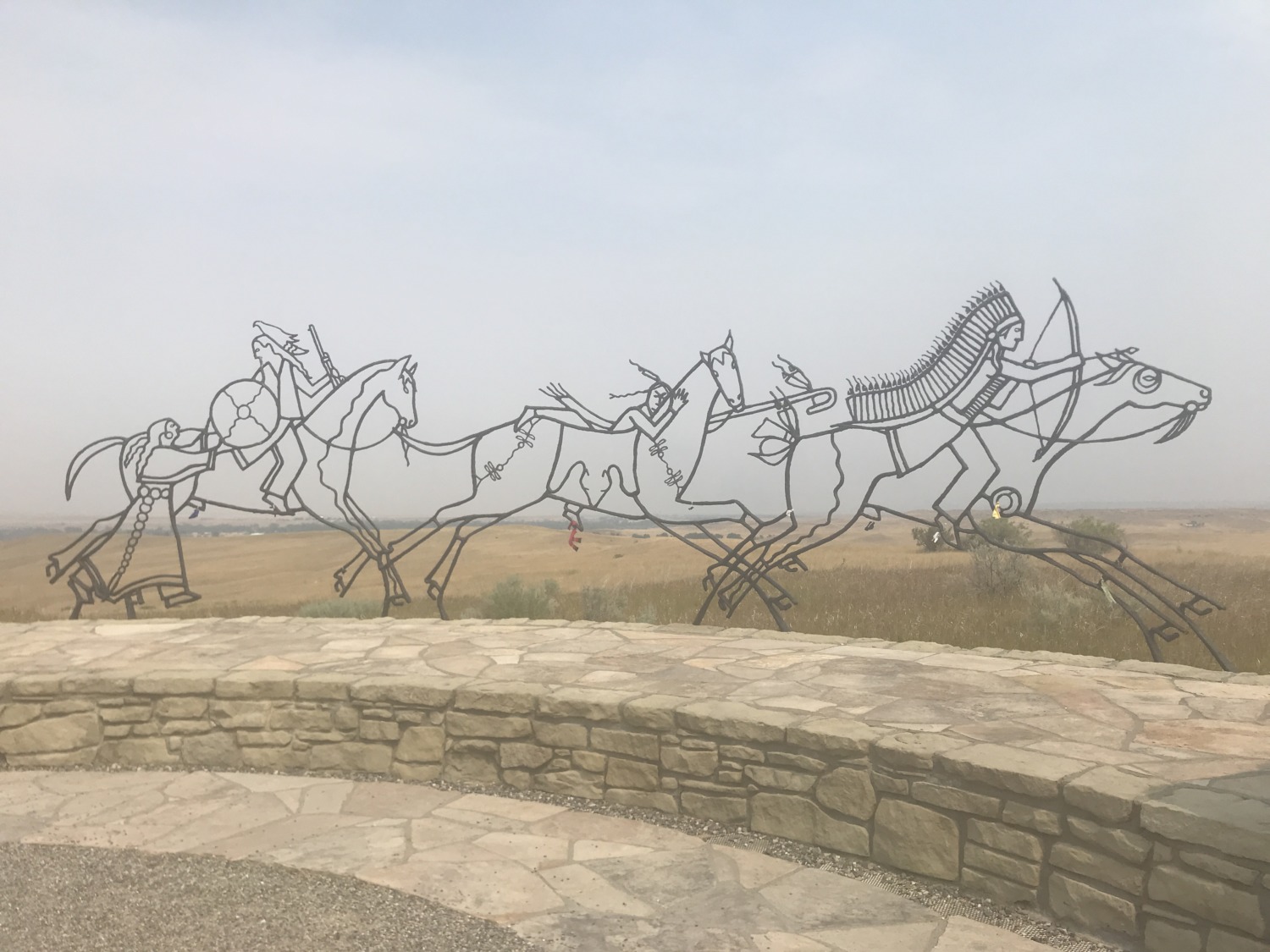After the quiet and solitude of Bighorn Canyon, Tom and I headed to Little Bighorn Battlefield National Monument. Often referred to as “Custer’s Last Stand,” Little Bighorn has been romanticized to the point of absurdity. Despite his leadership during the Civil War, George Armstrong Custer died an arrogant fool. His story, as told by his widow and by Hollywood films through the 1960’s, presented him as a gallant hero.
The National Park Service at Little Bighorn Battlefield National Monument presents a balanced portrayal of Custer, the soldiers, and the Native Americans that fought at Little Bighorn. The Lakota Sioux had been given most of western South Dakota and parts of Montana for their reservation. The treaty included the promise to protect the Indians “against the commission of all depredations by people of the United States.” When gold was discovered in the Black Hills, just six years after the treaty was signed, thousands of white settlers and miners invaded the reservations. The government – of course – reneged on their treaty and sent soldiers in to protect the white settlers.
The Sioux were understandably upset and decided to leave their reservation, led by Chiefs Sitting Bull and Crazy Horse. They were joined by others who were protesting the ways they had been treated on reservations. The Lakota Sioux and Cheyenne attacked white settlers and miners who were on reservation land illegally. After an attempt to buy the Black Hills failed, the government sent the US Army to force the Native Americans back on the reservations.
The Army strategy had three prongs: General George Crook would come north from Fort Fetterman in Wyoming. Colonel John Gibbon would come south from Fort Ellis in Montana. General Alfred Terry would come west from Fort Abraham Lincoln in North Dakota. Together they would surround the dissident Indians and force them back on the reservations. Unfortunately for the Army, Crook’s troops were defeated by a large Lakota-Cheyenne force at the Battle of Rosebud on June 17. Terry and Gibbon joined up along the Yellowstone River and Terry sent Custer out in charge of the 7th Cavalry to find the Indian camp.
Lieutenant Colonel Custer found their village early on the morning of June 25, 1876. Not realizing the number of Native Americans gathered, Custer split his command into three divisions. Officers Benteen and Reno were to attack from the south. Custer would attack from the north. Overwhelmed by the size of the Native American forces, Benteen and Reno took up a defensive position on the south side of the Little Bighorn River which they held for the two days of the battle. Custer’s command was surrounded by warriors and destroyed in fierce fighting. In all, 263 soldiers died, including all the men under Custer’s direct command. Eighty Native American warriors were also killed. The Native Americans withdrew when scouts reported the advance of Terry and Gibbon’s columns.
Although the Battle of Little Bighorn was a victory for the Native American forces, they ultimately lost the Great Sioux War. Within three years, most of them had surrendered and returned to the reservations.
Tom and I visited Little Bighorn Battlefield National Monument on a weekday and were amazed at how many visitors were there. We parked in the lot farthest away from the Visitors Center and it was almost full. There was a line at the restrooms, a line in the gift shop, and shoulder-to-shoulder people in the museum. Too many people for us. The movie was not showing because of Covid-19 restrictions and we didn’t spend long in the museum. The two monuments, the 7th Cavalry Memorial and the Indian Memorial were surrounded by people.
We decided to get in the car and drive the 17 stop Battlefield Tour. Again, there were lots of people, especially at the Reno-Benteen Monument at the end of the trail. Because it was over 100 degrees with lots of smoke in the air, Tom and I decided not to get out and hike around the Battlefield. I get claustrophobic when too many people press in around me and I was ready to get out of the National Park site. I had my stamp. We had seen it. We could read more about it later.
Little Bighorn Battlefield National Monument is an interesting place to visit. It reminded us that there are two sides (at least) to most issues. It also made me think of the futility of most armed conflicts. If you want to go, I recommend going during the off season, whenever that is. I think I could have appreciated it more if there had been fewer people.



